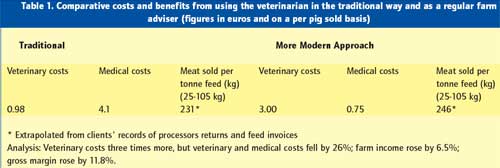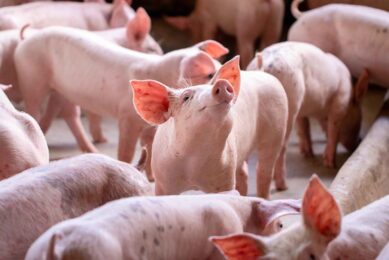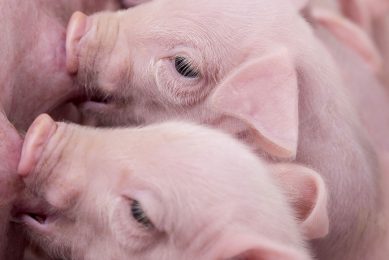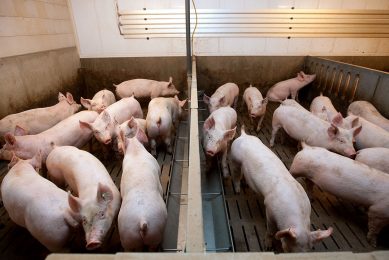What the textbooks don’t tell you about… Using the veterinarian properly – part 1

The days when we used the veterinarian merely as a fire brigade rather than a fire prevention officer are disappearing, at least on the better farms. But a survey I did in Britain showed that 20% of the farmers questioned (in private) confiessed mainly to calling out the veterinarian when they needed restricted medications or supplies, rather than for advice. I took advantage of their candour to ask some more questions about their costs and performance, and talked to several veterinarians as well about their costs and workload (see part 2 in the next issue).
By John Gadd
As a result I have quite a few figures now on the advantages of using the veterinarian as a regular farm adviser rather than in his traditional role in curing disease once it has occurred. From this I am able to construct Table 1 and I’ve not seen this sort of information in any textbook.
Curer or preventer
The first column is my estimate of what a veterinarian costs when used solely or mainly as a disease curer, and the effect on income from the typical disease patterns on the bottom third performers in the UK.
The second column is the costs of a veterinarian used much more as a disease preventer on a regular basis. The fees are much higher, of course, on a farm per year basis but look at the improvement in income from the more meat sold per tonne of feed fed, along with the reduction in veterinary and medical costs per pig.
Moral: the specialist veterinarian used like this may cost more, but the farm output is higher and the medication costs are lower.
Is it another rip-off?
The problem with those pig producers reluctant to employ a ppig specialist veterinarian (not a general practitioner) on a regular (once a month or six weeks) basis is that they cost more, often have to travel further in these expensive days of running a vehicle and, let’s face it, all veterinary presence and some medication/vaccine costs have risen sharply over the past five years, whether the veterinarian is used sparingly, only for essential visits, or otherwise. In fact my questioning revealed that using a pig specialist veterinarian on a regular monthly basis, elevated his bills threefold. Yes, as much as that.
Seen from the farmer’s side of the gate, quite a few producers feel that their veterinary practice may be ‘coining it’ – but this is not a ‘rip-off’as it can be in some other professions, as the veterinary world is overwhelmingly not given to overcharging as a rule.
I have some interesting figures next month which provides a guide into a veterinary practice’s costs and charges, which confirms my view.
Let’s do some sums
Meanwhile, take another look at Table 1 in relation to your own veterinary and medical costs per pig sold (including the breeding and nursery figures). Even if it is as high as €5 per pig (these were ‘bottom third’ producers, remember), this is still only about 8% of your total costs, and paying three times more for a regular visit, his skilled advice, his staff training and motivation and all his monitoring and measuring should only increase costs (from Table 1) by about €2 per pig, or total costs by a tad over 3%.
But if Table 1 data are a guideline, medical costs by themselves could fall by up to four-fifths, reducing total costs by over 5.5%, and thus go on to improve gross margin per pig by up to 21%.
But will it happen in your case? You won’t know if you don’t try it!











